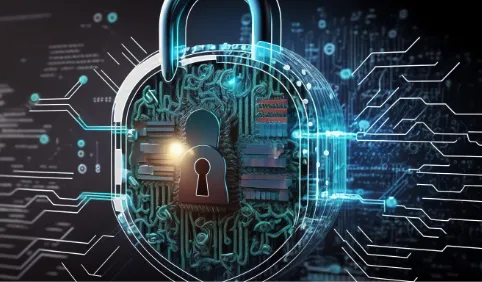What Is Secure Virtualization?
Secure virtualization is a comprehensive approach to leveraging virtualization technology while minimizing security risks. Virtualization itself involves running multiple virtual instances or environments on a single physical machine, allowing flexibility in managing computing resources. However, this abstraction layer introduces vulnerabilities that can be exploited by malicious actors if not properly secured.
The difference between virtualization and secure virtualization lies in their respective objectives. Virtualization aims to improve efficiency and flexibility in IT infrastructure management, while secure virtualization emphasizes the importance of security controls and mechanisms to safeguard virtualized environments against malicious activities, unauthorized access, and data breaches.

Secure virtualization emphasizes safeguarding controls and mechanisms.
Security Measures for Virtual Platforms
In broad terms, secure virtualization includes:
- Isolation: Each virtual instance on a physical host must be securely isolated from others, to prevent unauthorized access and data breaches. Techniques such as hypervisor-based isolation ensure this and mediate access to physical resources. Secure virtualization platforms also implement strict access controls and segregation of duties to limit the scope of potential security breaches.
- Integrity: Keeping the software and configurations within each virtual instance free from tampering involves techniques such as secure booting, integrity monitoring, and cryptographic validation of virtual machine images to detect any unauthorized modifications.
- Security: Measures including deploying antivirus software, intrusion detection and prevention systems, and network segmentation act to protect against malware, privilege escalation, network-based threats, and other attacks. Regular security updates and patch management address known vulnerabilities and maintain overall security.
The specifics of securing a virtual platform constitute a multilayered approach. Key elements include:
- Hypervisor security
- Isolation and network segmentation
- Secure configuration management
- Integrity monitoring
- Access control and authentication
- Patch management and vulnerability scanning
- Backup and disaster recovery
A comprehensive secure virtualization approach also takes into consideration hardware security, security in containerized environments and in the cloud, and lifecycle management.
Nontechnical Factors Impacting Virtualization Security
Securing a virtual platform involves a range of considerations beyond the technical aspects. Organizations must take into account:
- User training and awareness: Human error is one of the biggest security risks in any environment. Comprehensive training and awareness programs for users and administrators help mitigate this risk. Security best practices include strong password management, identification of phishing attempts, and security protocols.
- Supplier security: If your virtual platform relies on third-party software, services, or infrastructure (such as cloud providers), assess their security practices. This may involve reviewing security certifications, conducting security audits, and establishing clear contractual agreements regarding security responsibilities.

Organizations using virtual platforms adopt a security culture.
- Incident response planning: Even with the best prevention measures in place, it’s crucial to maintain a well-defined incident response plan. Outline all steps, including procedures for containing the incident, conducting forensic analysis, notifying stakeholders, and implementing remediation measures. Regularly test and update the incident response plan.
- Regulatory compliance: Specific regulatory requirements and compliance standards may apply to securing virtualized environments. For example, regulations such as GDPR, CCPA, or industry-specific standards including NIST SP 800-53 or ISO/IEC 27001 impose specific security controls and reporting obligations. Meeting these compliance requirements helps organizations avoid legal and financial consequences.
- Risk assessment and management: Regular risk assessments involve evaluating threats, assessing the likelihood and potential impact of security incidents, and identifying controls and countermeasures to mitigate risks to an acceptable level. Risk management is an ongoing process that should be integrated into the organization’s overall governance framework.
- Security culture and governance: A strong security culture includes fostering security awareness and accountability among employees; promoting communication and collaboration across teams (such as IT, security, and compliance); and establishing clear organizational policies, procedures, and responsibilities for managing security risks.
How Can Wind River Help?
Wind River Helix Virtualization Platform
Wind River® Helix™ Virtualization Platform is a safety-certifiable, multi-core, multi-tenant platform. It consolidates multi-OS and mixed-criticality applications onto a single edge compute software platform, simplifying, securing, and future-proofing designs across industries.
Helix Platform enables intellectual property and security separation between the platform supplier, the application supplier, and the system integrator. This separation provides a framework for multiple suppliers to deliver components to a safety-critical platform.
The platform provides options ranging from dynamic environments without certification requirements to highly regulated and static applications for industries such as avionics and industrial. It is also designed for systems requiring the mixing of safety-certified applications with noncertified ones, such as automotive.
» Learn More About Helix PlatformWind River Studio
Wind River Studio, which includes Helix Platform, is the first cloud-native platform for the development, deployment, operations, and servicing of mission-critical intelligent edge systems that require security, safety, and reliability. It is architected to deliver digital scale across the full lifecycle through a single pane of glass to accelerate transformative business outcomes.
Studio features include:
- Ability to develop in the cloud
- Collaboration in a CI/CD workflow
- Integration of applications
- Ability to automate processes
- Operation and service on the edge
Intel Simics
Intel® Simics® is a full-system simulator used by software developers to simulate the hardware of complex electronic systems.
Simics allows on-demand and easy access to any target system, more efficient collaboration among developers, and increased efficiency and stability in automation. Simics supports adoption of new development techniques that are simply not possible with physical hardware, enabling you to deliver better software faster.
» Read the Product OverviewIntel and Simics are trademarks of Intel Corporation or its subsidiaries.

